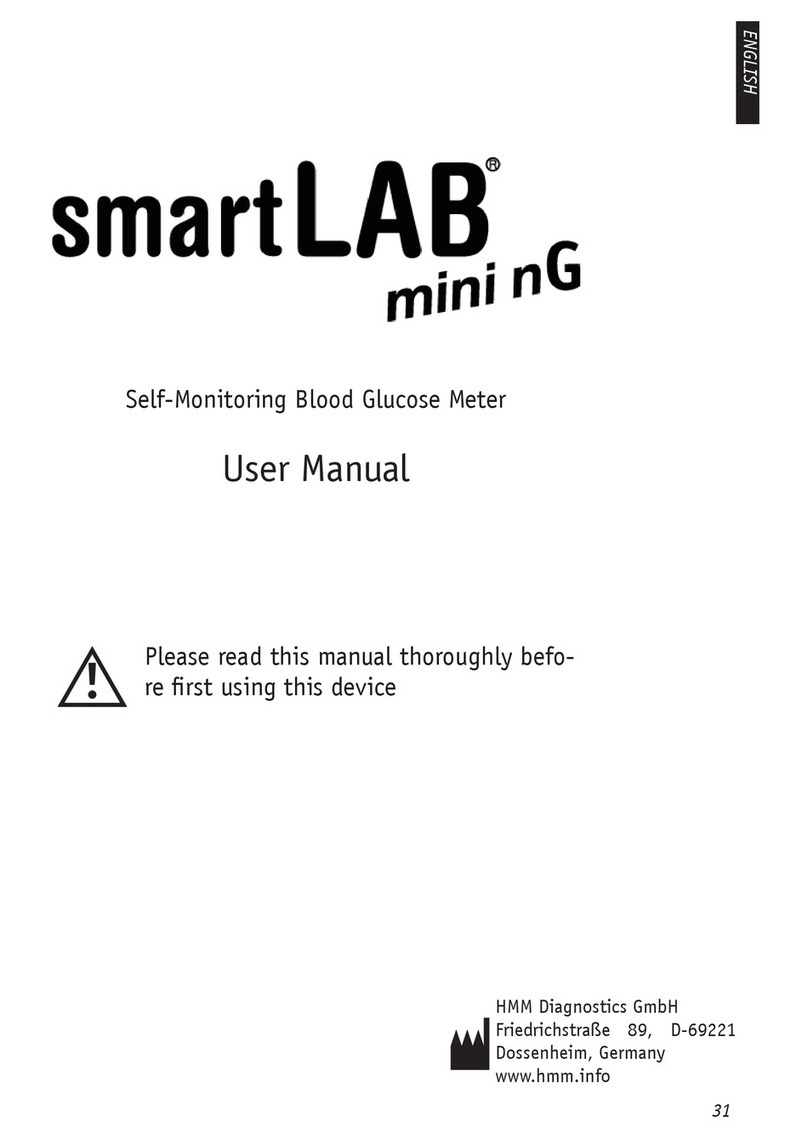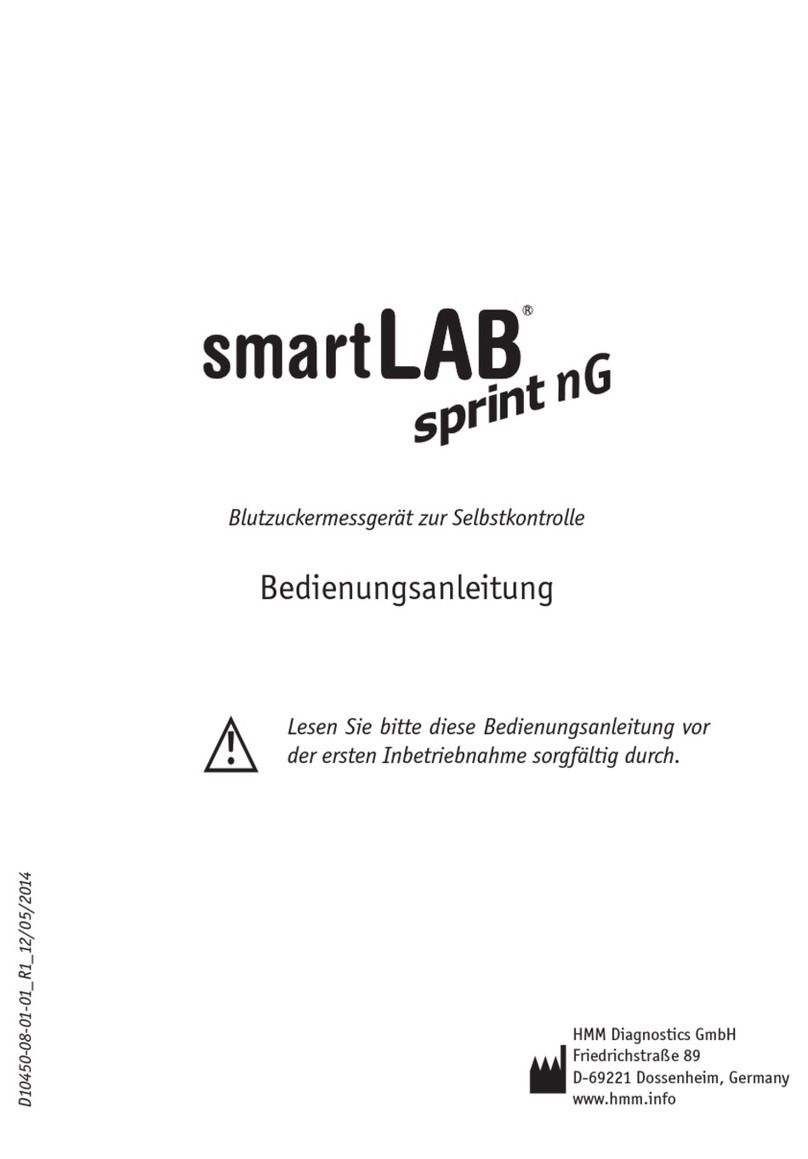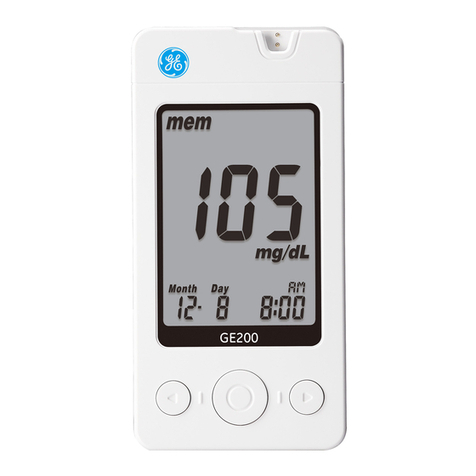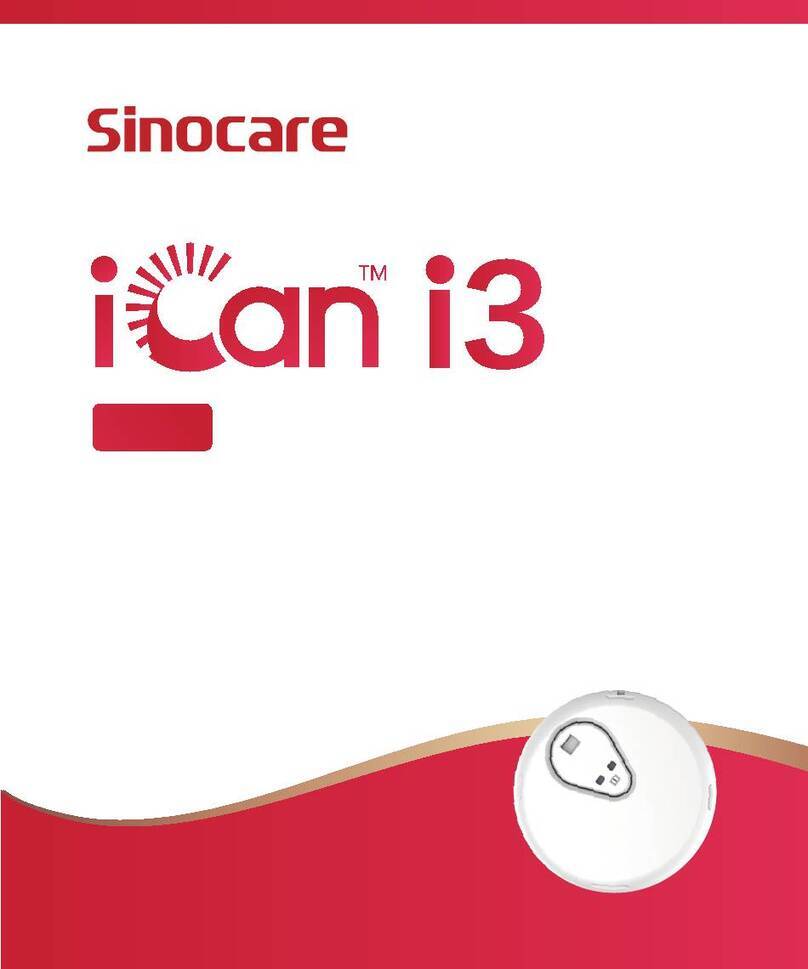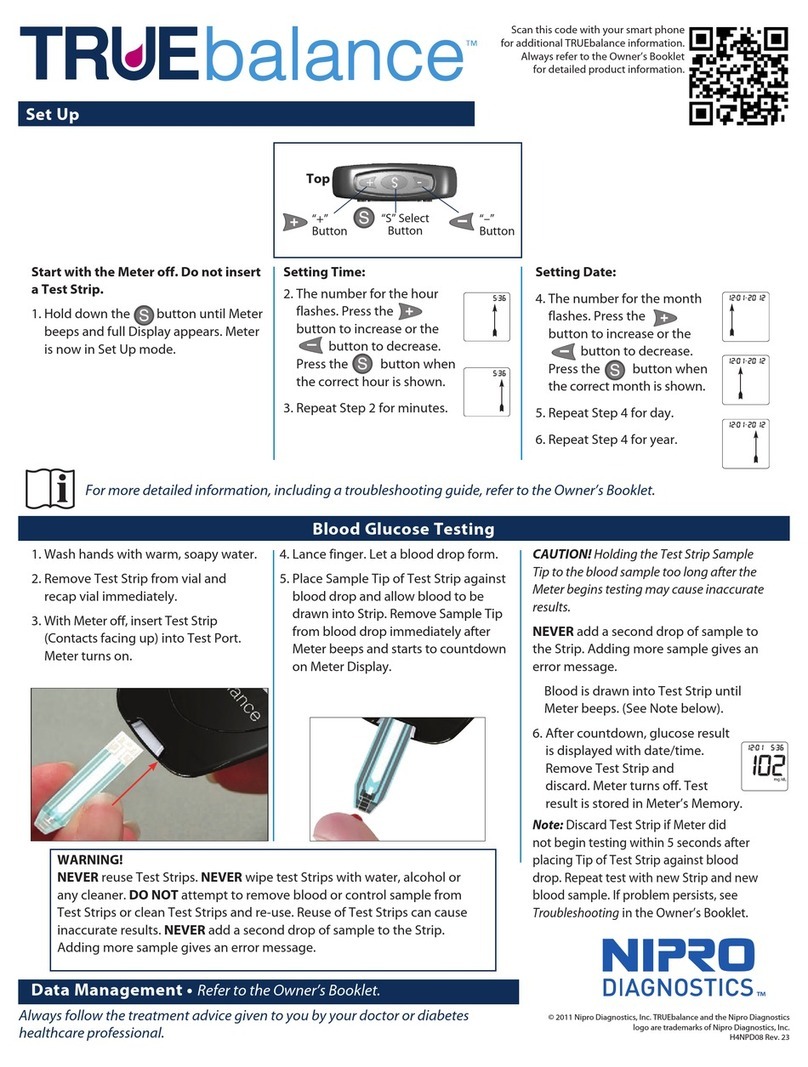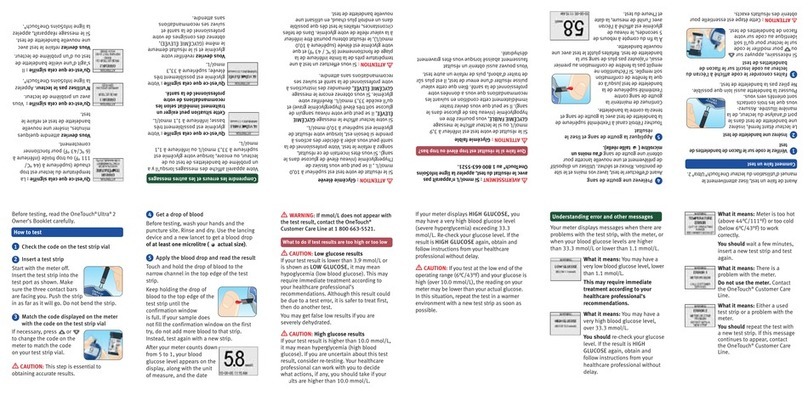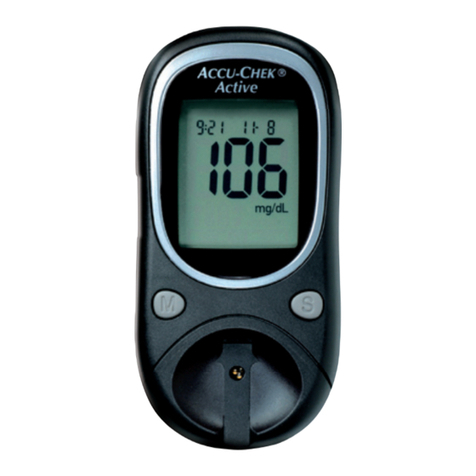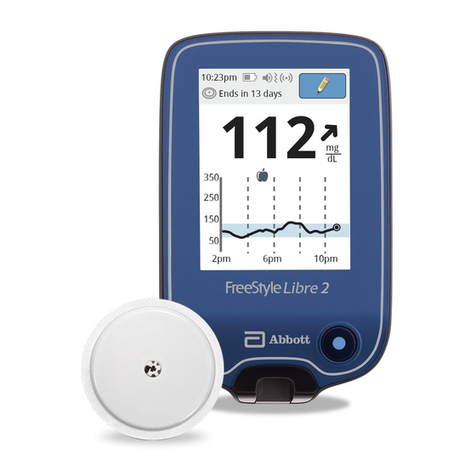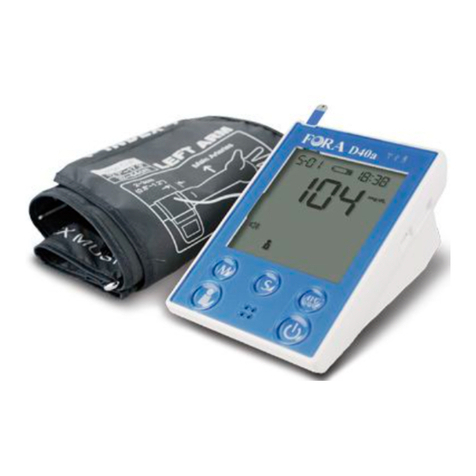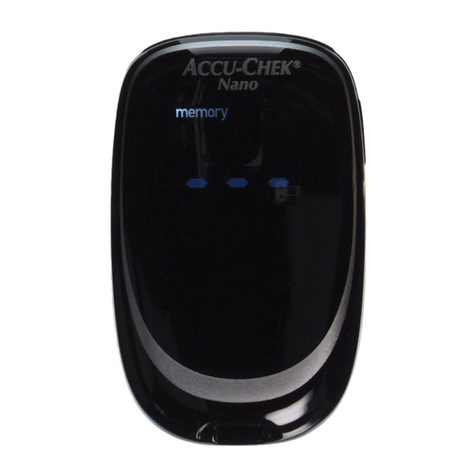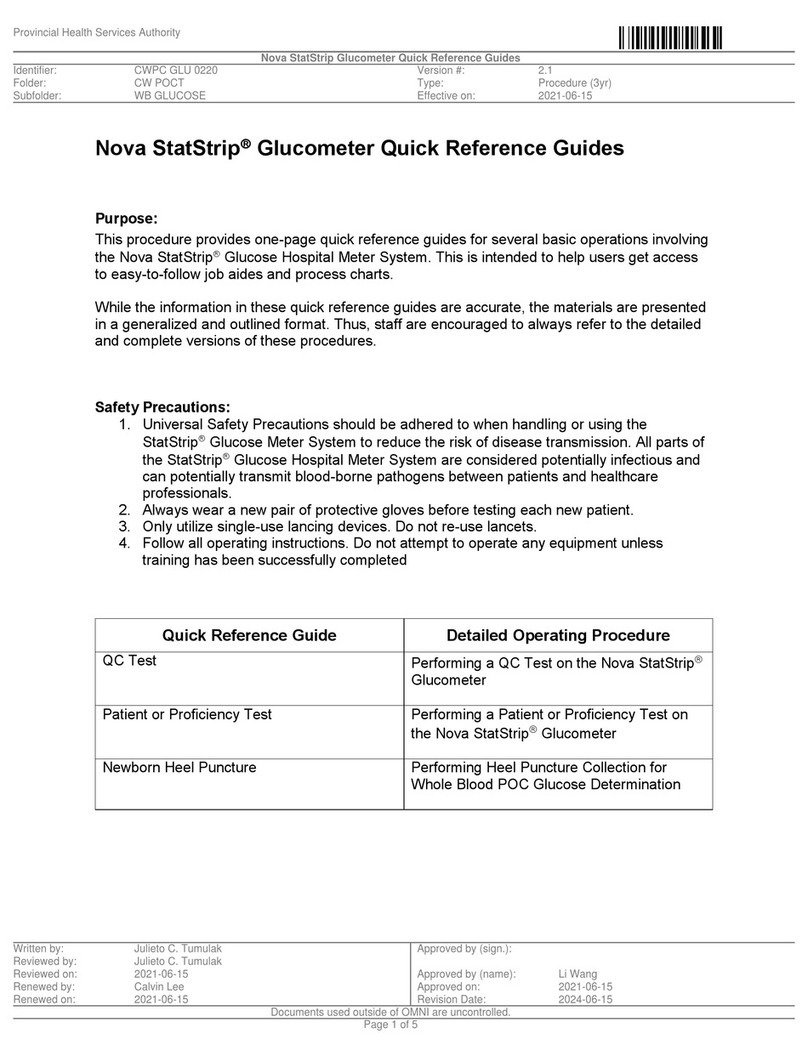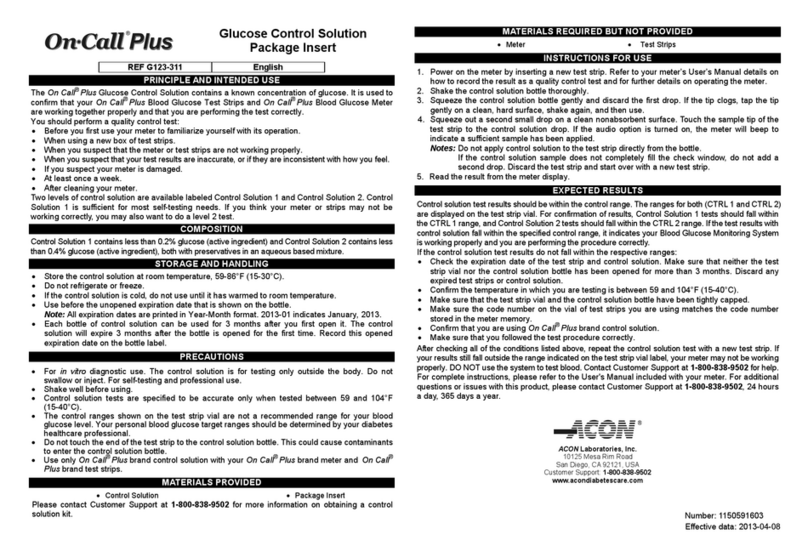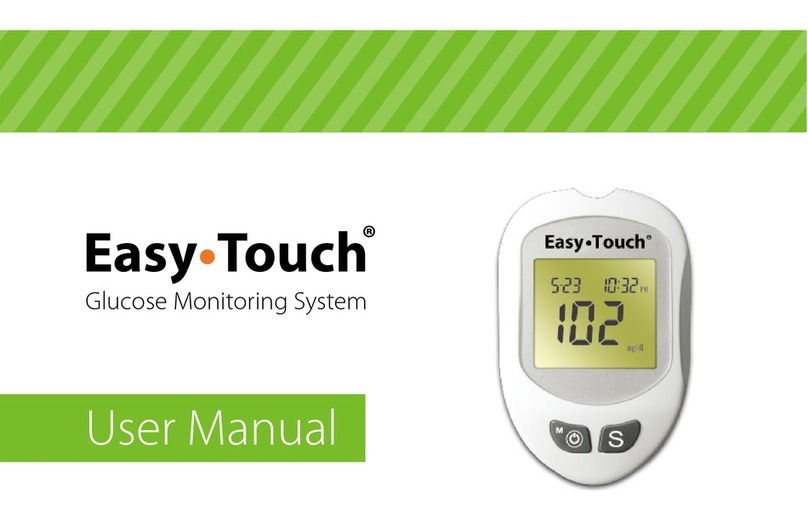Smart Lab Sprint nG User manual

43
ENGLISH
User Manual
HMM Diagnostics GmbH
Friedrichstraße 89
D-69221 Dossenheim, Germany
www.hmm.info
Self-Monitoring Blood Glucose System
Please read this manual thoroughly before first
using this device

44

45
ENGLISH
Content
I. Introduction 47
Measuring principle 48
Intended use 48
Important information 49
Note on smartLAB®nG „NO CODE“-test strips 51
II. Your smartLAB®sprint nG 52
Display & functions 52
Specifications 53
The smartLAB®nG test strips 54
Explanation of symbols 55
Set Content 56
III. Setup & functions 57
Insert and changing batteries 57
Setting Time and Date 59
Using smartLAB®nG Blood Glucose Test Strips 60
Funktion Check 61
Control solution testing 62
Running a blood glucose test 66
Alternate Site Testing (AST) with the transparent cap 69
Understanding your test results 70
Memory, Storing and displaying stored results 73

46
IV. Miscellaneous 74
Maintenance 74
Frequently Asked Questions 74
Troubleshooting 77
Limitations of the measurement procedure 80
Regularity and Safety Notice 83
Warranty 83

47
ENGLISH
I. Introduction
Thank you for using the smartLAB®sprint nG Self-Monitoring Blood
Glucose System (SMBG). This system was designed to be depend-
able, easy-to-use, compact, lightweight and portable to help you
monitor your blood glucose on a regular basis.
Please read this manual thoroughly before you begin testing. It pro-
vides you and your diabetes care team with important information
and step-by-step direction to use the system correctly. Although
your smartLAB®sprint nG system is easy to use, you should con-
sult your healthcare professional (this may be your doctor, diabetes
nurse educator or pharmacist) for instructions on how to use the
system. The only way to obtain accurate results from any system is
to make sure you correctly use it. If you have any concerns, please
call your authorized distributor in your country during business
hours.

48
Measuring principle
The smartLAB®sprint nG Self-Monitoring Blood Glucose System is
designed to allow rapid measurement of blood glucose by using an
electrochemical biosensor technology. This system employs a dis-
posable dry reagent strip technology, based on the FAD-binding
glucose dehydrogenase.
Each test strip features an electrode containing FAD-binding glu-
cose dehydrogenase. A capillary blood sample is applied to the col-
lecting area of the strip, and is automatically drawn into the reac-
tion zone, where the FAD-binding glucose dehydrogenase catalyzes
the glucose dehydrogenation. It will produce gluconolactone.
During the reaction, a mediator transfers electrons to the electrode
surface and generates a current. The amount of the current is pro-
portional to the amount of glucose present in the blood sample.
After 5 seconds, the smartLAB®sprint nG will show glucose concen-
tration on the screen.
Intended use
The smartLAB®sprint nG is intended for the quantitative measure-
ment of glucose in venous whole blood or fresh capillary whole
blood from fingertips, palm and forearm. Testing is done outside
the body (In citro diagnostic use). It is indicated for self-testing
(over the counter [OTC]) by persons with diabetes, or in clinical
settings by healthcare professionals, as an aid to monitor the ef-
fectiveness of diabetes control. The meter should be used only with
smartLAB®nG blood glucose test strips.

49
ENGLISH
Important information
• The smartLAB®sprint nG blood glucose system is designed and
approved for testing venous whole blood or fresh capillary
whole blood samples from your fingertips, palm and forearm.
The meter is for in vitro diagnostic use ONLY (for testing out-
side the body). It should not be used to diagnose diabetes.
• The smartLAB®sprint nG blood glucose system can only be used
with smartLAB®nG Blood Glucose Test Strips. Other test strips
will give inaccurate results.
• Severe impact may cause the meter to malfunction. Do not dis-
assemble the meter as it may damage components inside and
cause an incorrect reading. The warranty will be void if the
meter has been disassembled.
• Testing is not valid for neonatal blood specimens.
• Incorrect results may occur when performing the test. If you
believe you are not feeling well, please contact your healthcare
professional immediately.
• Always keep the meter clean and store it in a safe place. Pro-
tect from direct sunlight to ensure a longer lifespan.
• The strip slot should be kept free from dirt, dust, blood stains,
and water stains.
• Do not store the system and test strips in a car, a bathroom or

50
a refrigerator. And the system, strips and lancing device should
be kept away from children or pets.
• Remove batteries if the meter will not be used for one month
or more.
• Store the kits in a dry place with temperature range is 2 to
30°C (35.6 to 86 °F). Keep away from direct sunlight and heat.
• Store your test strips in their original vial only. Do not transfer
them to a new vial or any other container.
• Indicate the date you open the vial. Discard all unused
strips immediately after 90 days from open date. The strips are
for single use only.
• You should not test critically ill patients with home-use blood
glucose meters.
• Warning for potential biohazard: Healthcare professionals us-
ing this system on multiple patients should be aware that all
products or objects that come in contact with human blood,
even after cleaning, should be handled as if capable of trans-
mitting a viral disease.
• Please dispose device according to the local rule of the disposi-
tion of electronic device / accessory waste.
• If the equipment is used in a manner not specified by the man-
ufacturer, the protection provided by the equipment may be

51
ENGLISH
impaired.
Do not touch the test strip with wet hands
Do not use expired test strips
(see expiration date on the strip vial)
Do not bend, cut or twist the strip
Consult with your healthcare professional before testing
on your palm or forearm.
Altitude up to 3,048 meters above sea level has no effect
on readings.
Health-Related Information
• If you are experiencing dehydration, frequent urination, low
blood pressure, shock or hyperosmolar hyperglycemic nonke-
totic coma (HHNKC), you may get a test result that is lower
than what your blood glucose really is. If you think you are
dehydrated, call your healthcare professional right away.
• If you have followed the steps in the user’s manual, but still
have symptoms that do not seem to match your test results, or
if you have questions, please contact your healthcare profes-
sional.
• Please read your test strip instructions carefully for additional
health-related information
Note on smartLAB® nG „NO CODE“-test strips
The smartLAB®nG blood glucose test strips compatible with
smartLAB®nG glucose meters need not to be coded, any more.

52
II. Your smartLAB®sprint nG
Display & functions
Folder Symbol Meaning
Date Show the moment of month and day.
Time Show the moment of time.
Test result Show the test result.
Record/Average
display
Tracking all the test results or average of
/14/30/90 days.
Control Solution Control Solution test and the result is not
included in the memory.
AM Indicate before noon
PM Indicate after noon
Batteries status When the battery symbol appears, prepare
new batteries for installation.
AC = ante cibos Indicate before meal
PC = post cibos Indicate after meal
Insert strip Insert the test strip to test blood glucose.
Thermometer When the thermometer icon appears, the
temperature is too high or too low.
Error The meter system is in fault.
Memory Show the memorized results
Apply blood Apply blood to the test strip
Glucose unit The testing unit of blood glucose is mg/dL.
Glucose unit The testing unit of blood glucose is mmol/L.

53
ENGLISH
Specifications
1. Type: smartLAB®sprint nG
2. Measuring range: 20~630 mg/dL
(1.1~35.0 mmol/L)
3. Measuring duration: 5 seconds
4. Time mode: AM/PM - 24 hours
5. Memory: 480 values
6. Operating temperature: 10°C~40°C
(50°F~104°F)
7. Storage Temperature: -20°C ~50°C
(-4°F~122°F)
8. Relative humidity: RH ≤90%
9. Blood sample: ≥ 0,6 µL capillary
fresh blood or venous whole blood from
fingertips, palm, or forearm
10. Calibration: Plasma equivalent
11. Hematocrit (Hct): 30-55%
12. Battery type: 2 1,5 V AAA Lithium
batteries
13. Battery life: over 2000
measurements
14. Display-size: 43 x 35 mm
15. Meter dimensions: 98 x 57 x 22 mm
13. Weight: 53,2 g (without batteries)
Test Strip Slot-
Insert test strip
here.
Display-
Shows results,
messages, and
results stored in
memory.
Left Button-
Press to enter
memory, adjust
setting, and
scroll through results.
Right Button-
Press to turn the meter
on, confirm
setting, and scroll
through results.
Front
Strip Ejector-
Push the Strip
Ejector to
remove the strip.
Side
Battery Door-
Flip open the battery
door by pushing the tab
in the direction of the
arrow and pulling the
door up.
Back

54
The smartLAB®nG test strips
Note: You can find the test strip expira-
tion date on the vial label next to the
symbol.
Expiration date
Vial opening date (please
note)
Electrode
Insert direction
Grip zone
Reaction zone
Aperture Application zone

55
ENGLISH
Explanation of symbols
Caution!
This product meets the requirements of Directive
98/79/CE for in vitro diagnostic medical devices.
Lot number
Expiration date
For in vitro diagnostic use only
1.5V(AAA) x 2 batteries only
Single use only
Storage temperature
Manufacturer
Before use, read manual first
Catalogue number
Serial number
Control solution
Opening date of test strip vial
Sufficient for
Blood glucose test result in mg/dL
Blood glucose test result in mmol/L
Green Dot / Duales System Deutschland GmbH (DSD)
5-seconds result
Keep away form sunlight
0.6 μ L blood volume
Discard 6 months (180 days) after opening
Large LCD screen
Human-factor flow

56
Set contents
1 smartLAB®sprint nG blood glucose meter
1 User manual
1 carrying bag
2 AAA 1,5V Alkali batteries
1 smartLAB® lancing device
1 smartLAB® Check Strip
1 smartLAB®nG Quick Start instruction
10 smartLAB® lancets
10 smartLAB®nG blood glucose test strips
1 smartLAB®nG blood glucose test strip instruction

57
ENGLISH
III. Setup & functions
Insert and changing batteries
Note:
1. Remove the batteries when you will not be using the meter for
one month or longer.
2. Values won’t be deleted when the batteries are replaced.
Meter, batteries, lancets, test strips etc. must be
disposed of according to local regulations at the end of
their usage.
1. Open the battery
door on the back of
the meter by pushing
the tab in the direc-
tion of the arrow and
pulling the door up.
2. Insert two bat-
teries and the me-
ter beeps.
3. Put the battery
door back in place
and snap it closed.
The meter turns on
automatically.

58
Low Battery
The meter uses two alkaline 1.5V (AAA) batteries. Batteries will
normally last for more than 2000 tests. Other types of 1.5V (AAA)
batteries are also acceptable, but the capacity of test times may
differ. Insert the batteries when you first use the meter or replace
with new batteries when the “LP” (low power) message and the low
battery symbol appear on the display.
The meter will not turn on the first time batteries are inserted.
Please press and hold right button or insert the test strip to turn
your meter on.
The meter will turn off automatically. Or you can press and hold
right button to turn your meter off.
Note:
1. The meter won’t delete earlier records after you replace batte-
ries.
2. You should reset the time and date again after you replace the
batteries.
3. 1.5V (AAA) x 2 batteries are available at most stores. You may
take the old batteries with you for replacement.
4. Remove batteries when you will not be using the meter for one
month or more.

59
ENGLISH
Setting Time and Date
Setting the current time and date in your meter is important if you
use the meter memory.
Note: AM means the time from 00:00 o‘clock until 12:00 o‘clock. PM
means the time from 12:00 o‘clock until 24:00 o‘clock.
1. Press the right button to turn the meter
on.
2. The display shows the last 2-digit of the
year that flashes at the top of display as
well. Press the left button to adjust the year
and press the right button to confirm the
setting.
3. Repeat step 2 to set date and time. The
flashing field is the one you are currently
setting. (A=AM, P=PM)

60
Using smartLAB®nG Blood Glucose Test Strips
• Use only with smartLAB®nG Blood Glucose Systems.
• Run a control solution test every time you open a new box of
test strips (See Chapter „Control Solution Testing.“)
• Keep the test strips in their original bottle.
• After you take a test strip out of the bottle, tightly close the
bottle immediately. This keeps the test strips dry.
• Use the test strip within three minutes after taking it out of
the bottle.
• The strip is for single use only. Do not reuse it.
• Record the date you open the test strip bottle. Be sure to check
the expiration date on the test strip bottle. The test strip is
good for 6 months from the date the bottle is opened or until
the expiration date on the bottle, whichever comes first.
• Store the test strip bottle and your system in a cool dry place.
• Store the test strips between 2°C ~30°C (36°F - 86°F). Do not
freeze.
• Do not apply blood or control solution to the test strip before
you insert it into the system.
• Do not touch the test strip with wet hands. Do not bend, cut,
or twist the test strips.

61
ENGLISH
Function check
You can carry out a function check with the Check Strip which is
included in your system set. You do not have to do the function
check before every measurement. It helps you to control if your
smartLAB®nG system works properly, from time to time, though.
1. Insert check strip into the meter:
Make sure your check strip is inserted with writing to top. The meter
will turn on automatically and the display will show „CHK“.
2. Check message in LCD display:
The function check will take approx. 3 seconds. The check can pro-
duce the following messages on the display:
•„OK”-yourmeterworksproperly
•„FAL“-changebatteriesandcheckagain.Ifthemessagestillap-
pears, please refer to your local supplier.
3. Remove check strip:
The meter will turn off automatically after removing the test strip.
Please keep the check strip in the soft case of the meter.

62
Control Solution Testing
Running a control test lets you know that your meter and test strips
are working properly to give reliable results. You should run a con-
trol test when:
• You use the smartLAB®sprint nG Blood Glucose System for the
first time.
•Youopenanewvialofteststrips.
•Youthinkthemeterorteststripsmightbeworkingincorrectly.
•Youdropthemeter.
•Youhaverepeatedatestandthetestresultsarestillloweror
higher than expected.
•Youarepracticingthetestprocedure.
Note: Professional users are instructed to follow federal, state, and
local guidelines concerning QC practices.
About the smartLAB®nG control solution
• smartLAB®nG control solution is not intended for human
consumption or injection.
• Use only with smartLAB®nG test strips.
• Write the date you first opened the bottle on the bottle label.
• The smartLAB®nG control solution is durable for three months
from the date the vial is opened or until the „Expiration Date“
on the bottle, whichever comes first.
• Do not use smartLAB®nG control solution that is past the
„Expiration Date“
Table of contents
Other Smart Lab Blood Glucose Meter manuals
